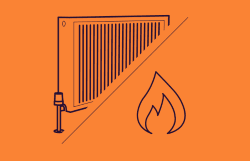In April 2022, EDF Energy will put up its prices for electricity and gas by an average of 3.9%. This price rise comes after a year in which EDF reduced its prices twice, by a total of 5.2%. The price increase will add an extra £47 to the average dual-fuel bill, taking it from £1,219 to £1,266. This is the first time that EDF has raised its prices since November 2018, when it put up its electricity prices by 3.5% and its gas prices by 5.5%.
EDF is one of the ‘big six’ energy companies in the UK, and supplies gas and electricity to around 5 million homes. The company says that the price rise is needed in order to cover the cost of investing in low-carbon energy and upgrading its network.
The price rise is needed in order to cover the cost of investing in low-carbon energy and upgrading its network, according to EDF. The company says that the majority of its customers will see their bills increase by less than £60 a year as a result of the price rise.
EDF attributed the price rise to increases in the costs of wholesale gas and electricity, as well as to the need to invest in upgrading its network of power lines and gas pipes. The company said that it had worked hard to keep costs down and that it would continue to do so. It also said that it would help customers who might struggle to pay their bills as a result of the price increase.
The news will come as a blow to consumers who have already seen their energy bills rise sharply in recent years. Inflation has been rising faster than wages, meaning that people’s incomes are not keeping pace with the increased cost of living. The government has introduced a number of measures to help people with their energy bills, including capping the amount that energy companies can charge for gas and electricity. However, these measures have not been enough to prevent bill rises from outstripping wage growth. Consequently, many households are now struggling to make ends meet.
EDF are not the only energy company planning to put up its prices in April 2022. British Gas, E.ON and Scottish Power have all announced that they will raise their prices by an average of 4.5%, while SSE is increasing its prices by an average of 4%. These companies have blamed their price rises on similar factors to those cited by EDF. Ofgem, the energy regulator, has said that it is investigating the reasons behind the proposed price rises. In the meantime, households across the country face an uphill battle to keep their energy bills under control.
If you’re on a standard variable tariff with EDF (or any other supplier), you don’t have to do anything – your prices will go up automatically on 1 April 2022. However, you could save money by switching to a cheaper deal now. Comparing energy tariffs is quick and easy, and you could reduce your bill by hundreds of pounds per year.
Why is this happening?
EDF says that the price rise is due to the ‘significant and sustained increase in costs. These include the costs of environmental levies, which have gone up by £22/year on average, and network charges, which have increased by £16/year.
What does this mean for my small business?
If you’re a small business owner, the price rise could have a significant impact on your bottom line. The good news is that you don’t have to accept the price increase – you can switch to a new supplier now and lock in a cheaper rate, if suppliers around you are open to new customers.
How can I compare energy tariffs?
Comparing energy tariffs is quick and easy with us. We can help you find the best deals from a range of suppliers, so you can make sure you’re getting the best value for your money.
To compare energy tariffs, simply enter your postcode into our comparison tool. We’ll show you all the deals available in your area, and you can filter them by price, supplier, exit fees and more. We can even prioritise green initiatives on your behalf, or help you install your smart meter.



